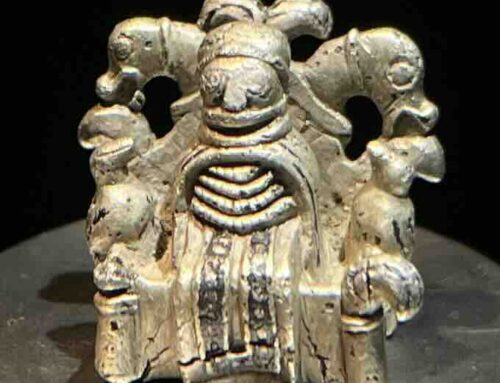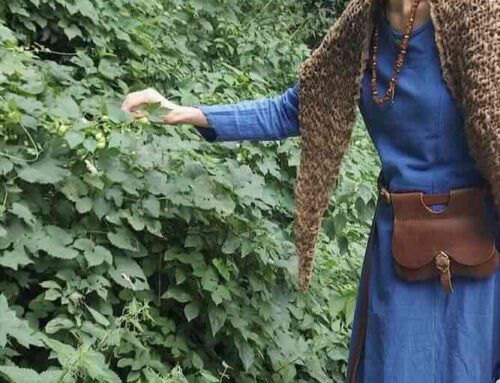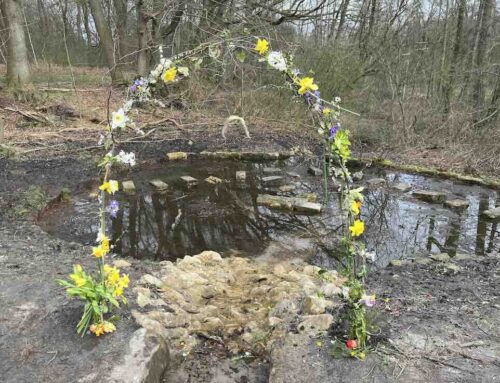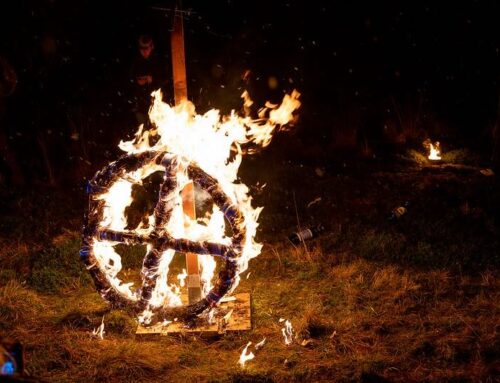This week I saw the film Mary Magdalene in the cinema and I have been having a difficult time to put my feelings about the film into words. And I am not quite sure what to make of the film. Does this do her justice? I don’t feel so. Now I have to put aside my own response to religion and look at what is beneath it. And also let go of my own frame of reference. But I am not sure if I want to for this review.
For me Jesus and Mary Magdalene are energies, archetypes. Energies people can connect with, be inspired by and embody. For people who have been reading my blog and know a bit about me know that I have had beautiful experiences with the Magdalen energy in France and Egypt. She has been very empowering in my life and she was there when I was going through a very dark place.
Link to some articles where I mention her.
I know Mary as an embodiment of the divine feminine, Mary Magdalena’s presence and healing power expand beyond our comprehension as a leader and mystic of the ages. This exploration includes legends, gospels, and apocryphal works like the Gnostic texts, as well as Mary’s pagan aspects of Isis and other goddesses. Not least, we understand her impact on the early days of Christianity and throughout history (and why she was marginalized), including today when she is more needed than ever.
“The world will only change as we change. I will not be silent. I will be heard”.
This film doesn’t show their sexual initiation, their wedding, that they were married, had children, what impressive journeys they had made together, that they worked intensively with twelve male and twelve female disciples, and how they shared their doctrine on the Divinity of man have developed and taught to the disciples and the surrounding community. And how they were completely equal to each other as husband and wife.
Many mysteries still remain, and I do not know anything for fact, I simply go by what deeply resonates with me and I know what I have scraped the surface upon regarding Mary Magdalen is truth for me. For you, take this as insight, food for thought, feel if it resonates for you also… I encourage you to check in with your self, empower yourself. And always do your own research and trust your own guidance.
Who is she?
To summarize, Mary was part of Jesus’ inner circle. But she was not a ‘whore’, nor an outcast, she was actually his closest confident, she was his lover. I am glad the film wasn’t a spectacle like say The Passion of Christ, but it could sure use some passion. Now in the Passion of Christ Mary Magdalene was “the other Mary”, but really it was the other way around. The bride was pre-eminent, not his mother. I feel Jesus and Mary loved each other passionately – no ego – equals – a union of passion where their ego’s melted away and united as one. I didn’t feel this in the film. Love and admiration yes, but passion? Not so much.
Mary Magdalene is not a meek woman, she is the one who speaks her truth and declares who she is. She was a powerful priestess and she was wealthy. She and the women who followed her supported the ministry of Yeshua and the disciples. She used her money for the greater cause. She was a student of the Egyptian mystery school – the Temple of Isis and she was a highly trained tantric priestess in the sacred sexuality temple arts. She was a pure physical incarnation of the divine feminine and the woman behind Jesus as she supported him on his powerful mission in defining history, healing and awakening humanity. She was the vessel that filled him up. Through their tantric relationship and alchemical love making practices she supported the raising of his kundalini (life force energy) to purify him, balance him, energize him & support him.
Mary Magdalene and Jesus also embody the reunion of the Sophia and the Logos. But she is far deeper what she represents as an archetype. She is the holy bride to the anointed king. The story in the gospels begins with the anointing by a woman and happens in all four gospels. This exact role of Magdalene in the gospels is seen in the bride in pagan myths who is united with the king in marriage and later find him resurrected after death. It is my personal ‘belief’ that the woman who anointed Jesus at the banquet at Bethany and “wiped his feet with her hair”–Mary of Bethany in John 12–was the same woman who went to anoint his corpse on Easter morning and met him resurrected–Mary Magdalene in John 20. In ancient mythologies of the hieros gamos, it is the Bride who anoints the Bridegroom King, and it is again the Bride who meets him three days later resurrected in the garden. A similar archetypal story celebrating the eternal return of the Life Force is ubiquitous throughout the Middle East in the cults of Inanna, Ishtar, Isis, Aphrodite, Cybele. In the Gospels, Jesus and Mary Magdalene incarnate this never-ending story on the physical/historical plane.
Ignoring for a moment the syncretism of these pagan cults, let’s look to the Hebrew Bible for the source of Mary Magdalene’s distinctive honorific. In about 700 BC, the Hebrew prophet Micah recorded an amazing prophecy for the “Magdal-eder”. The Hebrew word Magdal-eder literally means “Tower of the Flock” and refers to a hill near Bethlehem often used as a vantage point by shepherds to survey the surrounding fields. In this prophecy of Micah, the “Magdal-eder” is equated with the Daughter of Sion, the people of Israel, personified as “Jerusalem.”
One further argument supports Mary Magdalene as Bride of the Archetypal Bridegroom. In Hebrew and in Greek, each alphabet letter has a numeric value. In coining the Greek phrase “H Magdalhnh,” the architects of the New Testament gave this “other Mary” a title whose numeric value (153) reflects powerful associations with the Feminine principle and the Goddesses of the ancient world. Magdalene’s sacred number 153 is associated with the vesica piscis — () or yoni–a symbol universally associated with the Feminine. Ancient Greeks called the vesica piscis the “matrix,” the “doorway to life,” the “bridal chamber” and even the “Holy of Holies.” There is no mistaking the sexual associations of this shape and its feminine nature, deliberately coined into the significant epithet of the Mary called “the Magdalene.”
What does this mean today?
It reveals so much and it makes sense why the catholic church bastardized their relationship and covered up truths with lies. Consequently suppressing the feminine from this point forward in history as we moved into the age of Patriarchal dominance. This is because, the power that which the feminine holds within her sexuality is extremely intimidating and empowering. The church knew this. They were after control and manipulation of their followers. So what is the number one way to cut someone off from their personal power. Cut off their connection to their sexuality. Where does this stem from – the connection to the divine feminine. And all physical women incarnations who embody the Goddess. And the indoctrinations began – no sex before marriage, the outcasting of women, the lies about Mary as a whore, guilt shame and fear around human sexuality was birthed. It is what still penetrates our society today. We are still reaping the thousands of years of this collective consciousness. When a person is connected to their sexuality – they can not be controlled or fooled. This is true empowerment.
So what about the film?
For me this is an average film. I was disappointed. Director Garth Davis gives his interpretation to the story and ofcourse there is no problem with that, but we do not have to agree with that. It is a certain vision (as is mine) and it certainly encourages reflection. But the film is so bleak and joyless. Ofcourse this wasn’t a comedy, but the energy was so heavy. And the energies of Jesus and Magdalene don’t feel this heavy to me at all! Ofcourse they lived in hard times and they faced many challenges, but this bleak and bland, I don’t believe it was.
Ofcourse I didn’t expect the film to touch on her so called pagan past and connections and for the film to show a steamy union of the protagonists, but I was hoping for more zest, more power, the clear feeling of union of Mary and Jesus. It was all just so platonic and I don’t believe (yes one of those, a belief, yuk 😉 they lived like that. I feel they lived passionate lives. A passion for the(ir) word and each other. And this may be because the film needs to distance itself from that other “vulgar” Mary Magdalene tradition. It’s if the film feels the need to repudiate any suggestion of impropriety. The end credits acknowledge this as a work of fiction that is “true to the essence and value of Mary whose story is found in the Gospels.” Yet there’s no conviction to the direction or story, no passion, no fresh insight provided by the female perspective, nor into the female perspective. If it probes the nature of religion and faith, it does it so gently so as not to offend believers and non-believers. One scene, in which Jesus lectures the women of Cana, could have been theologically daring, but it feels too carefully pitched and most unsatisfactory. There is no chemistry in this film. The spark however was ignited in real life as Joaquin Phoenix and Rooney Mara are now a couple. Ahhhh…
“In the silence, is there something calling? Do you have the courage to follow what you hear?”
This drama plausibly suggests that Mary was a fiercely intelligent, resourceful woman who rejected the male norms of marriage and children laid down for her, and insisted on following Jesus. This was what caused her to be (at least initially) condemned as mad or possessed, is convincing. When she takes up her new position among the apostles, the film suggests that she does indeed become a favorite pupil. But all this means for Mary is doing an awful lot of enlightened gazing at Jesus, who in turn does a good deal of infinitely knowing smiles back at her, while their dialogue is muted and restrained. However I do applaud strongly this message of being who you are, non-conformity, following your heart and believing in the power of love. Also that she was seen by Jesus in the films as equal to the men as she was asked to perform blessings and baptisms.
The film takes us in reasonably short order through the familiar Sunday school events, like the raising of Lazarus, Palm Sunday, the expulsion of the money changers, the last supper and of course the crucifixion itself. But Mary washing Jesus’s feet with her hair has been removed and each of the big events seems weirdly low key and even anti-climactic.
For a lack of passion I do like the fact that the characters are not overly exaggerated and one-dimensional. For instance Tahar Rahim as Judas easily steals the film away with by far the most interesting performance, creating a man so deludedly ecstatic about his leader’s promise of the Kingdom that he can’t wait to get it started. Also the scene where Mary Magdalene forgives Judas touched my heart.
The lack of fireworks and great drama is also a good thing (yes here is the Libra in me again, never quite being able to ‘pick a side/view’) as I also feel that a non-exciting, bleak, and so called ‘ordinary’ life is beautiful and precious. And this almost ordinary tale of Jesus makes him very human and approachable. It makes us feel more worthy so to speak.
Another good thing is the cinematography. The film, shot in southern Italy and Sicily, is grittily beautiful. Locations and costumes felt right. The music is by the late Icelandic composer Jóhann Jóhannsson in collaboration with Hildur Gudnadottir, but even their plangent strings are too often used to cover for the lack of tension on screen.
In short, everyone has their own frame of reference from which the film can be assessed. For me, Mary Magdalene is much more than that now shown in the film. Nonetheless, there has not yet been a film that has so prominently portrayed her, which takes her out of her classic prostitute position, honoring her so emphatically as an intelligent, idiosyncratic and spiritual woman who chooses, shapes her life and stands up for the position of the woman.
It is up to you to feel if you feel called to see this film. It has started a lot of discussions and exchanges of views, which to me is a good thing.
And as this is the first film in which Mary Magdalene is portrayed in a respectful way and also together with Jesus. That image will stay with you after the film and do its work for you. That is all that matters to me now.
Thank you for reading.
With Love, Charissa x





